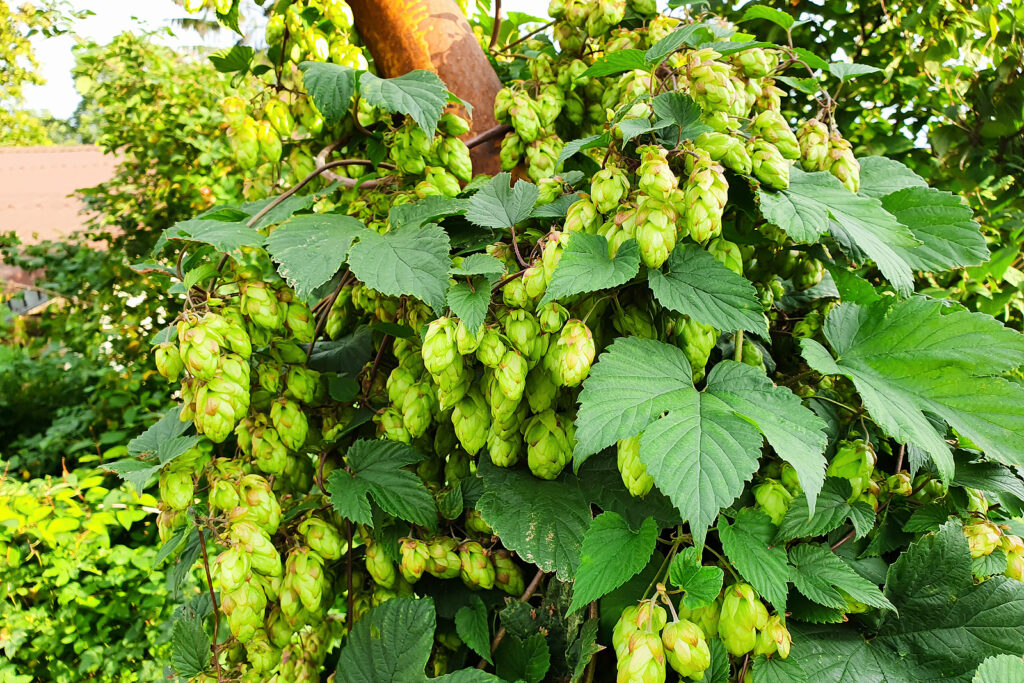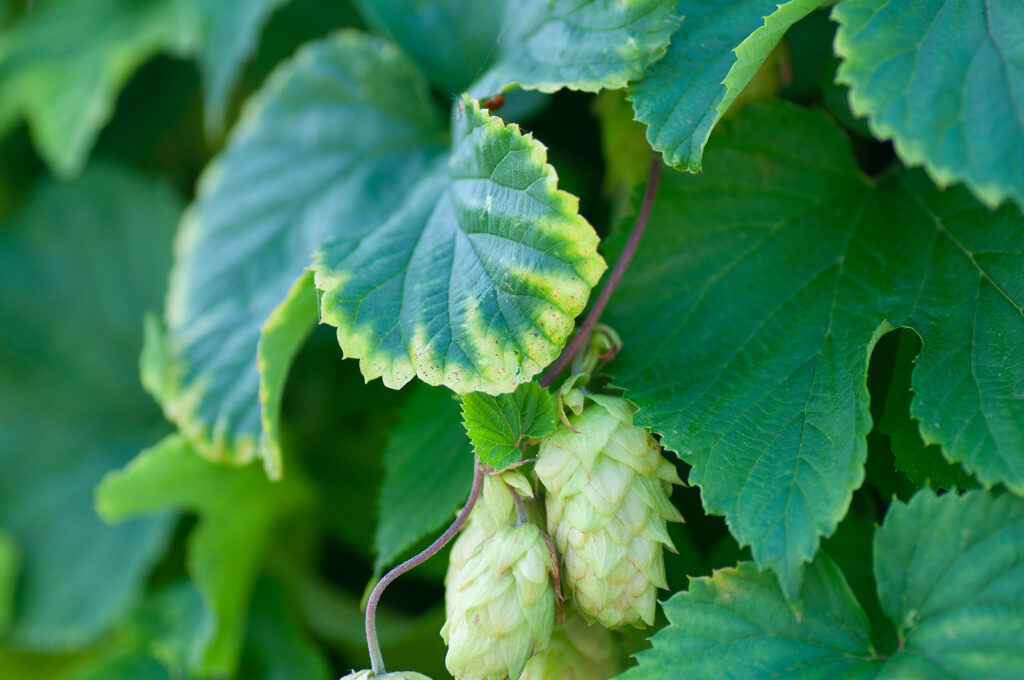Hops—Humulus—are grown in gardens for their bold, large-lobed leaves and the decorative flowers (hops) borne on female plants in autumn.
Hop vines are rapid growers. Their bright green leaves can cover a trellis or arbor in one season enlivening a garden. Each plant bears either male or female flowers. Female flowers are pale green and cone-like; male flowers are small and yellow in clusters.
There are two species in the Humulus genus. One species, Humulus japonica, is commonly grown as an annual and has a variegated cultivar that bears interesting mottled leaves.

Get to know Humulus
- Plant type: Perennial vine
- Growing zones and range: Zones 4 to 8
- Hardiness: Half hardy; can be damaged by frost
- Height and width: 10-20 feet (3-6m) tall
- Foliage: Deeply lobed, palmate leaves
- Flowers: A plant will bear male or female flowers; female plants bear pale green, cone-like, flowers that are small and appear in clusters; male plants bear yellow flowers
- Bloom time: Mid to late summer
- Uses: Screening, cover arbor or pergola
- Common name: Hops
- Botanical name: Humulus
- Family name: Cannabaceae
Where to plant Humulus
- Plant hops in full sun or partial shade.
- lant hops in humus-rich, well-drained soil.
- Give hops a sturdy trellis upon which to climb.
- Hops prefer a soil pH of 6.0 to 7.0.
When to plant Humulus
- Sow seeds indoors 8 to 10 weeks before the last frost in spring.
- After sowing seed in pots, place the pots in the refrigerator for 2 to 3 weeks before moving them to a warm spot (70°-75°F/21°-24°C) for germination.
- Sow seed directly in the garden 2 weeks before the last frost in spring, or in autumn for germination the following spring.

Planting and spacing Humulus
- Space hops 8 to 10 feet (2.4-3m) apart.
How to water and feed Humulus
- Water hops to keep the soil evenly moist.
- Fertilize hops with an all-purpose fertilizer at planting time or in early spring.
Humulus care
- Hops self-sow and can become weedy; pull up unwanted seedlings as they appear.
Humulus pests and diseases
- Hops are usually trouble free but are susceptible to downy mildew, powdery mildew, and anthracnose.

Humulus propagation
- Propagate hop by greenwood cuttings in early summer.
Humulus varieties to grow
- Humulus lupulus, common hop: Perennial; grows to 20 feet (6m); female plants have aromatic bracts that hide pale green dropping cone-like flower clusters to nearly one inch long; males bear tiny yellow flowers in clusters up to 4 inches (10cm) long; cultivar ‘Aureus’ has golden leaves—it needs full sun to color well.
- H. japonicus ‘Variegatus’: Perennial usually grown as an annual; grows to 10 feet (3m); ovoid spikes of green female flowers from mid to late summer; leaves are green streaked with white.















